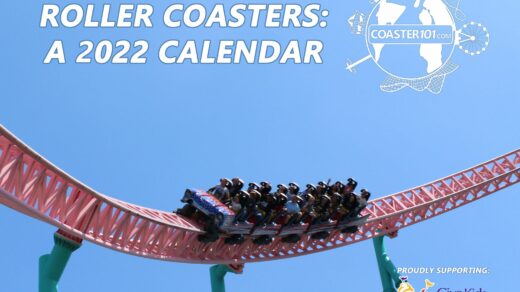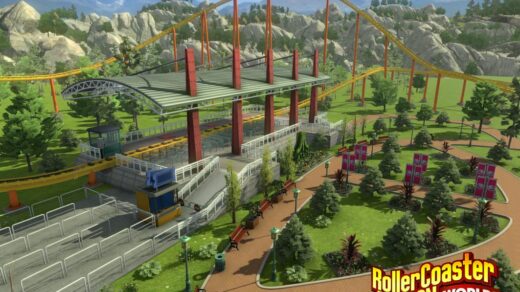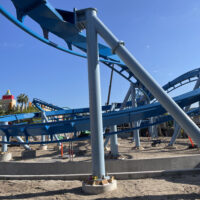Every so often you’ll see a video uploaded online of a roller coaster’s track visibly moving or “swaying” as a train races over it. This swaying movement is very startling to those who have never seen it before, especially in person. Thus, these videos are often followed by massive panic and a wave of ignorant comments like: “the ride isn’t safe”, “should be shut down immediately”, “an accident waiting to happen.” “How could the engineers be so stupid.” (These are actual article and YouTube comments).
The most recent uproar was over the video below of Lightning Run at newly opened Kentucky Kingdom (a ride getting rave reviews by the way). The video shows the cobalt blue track moving what many perceive to be an alarming amount.
This isn’t the first time this has happened. The Rattler, a world record breaking wood coaster that used to operate at Six Flags Fiesta Texas, was notorious for the amount it’s structure wiggled and shaked. As the train screams around a curve a tremendous amount of energy is directed sideways, causing the structure to sway.
Even B&Ms, arguably the best engineered coasters, flex and give a little, seen here on Diamondback’s first drop (in slow motion, thanks CoasterImage!). Other roller coaster sway videos: Six Flags New England Cyclone, Top Thrill Dragster.
So, why do roller coaster structures sway and is it a safety concern? There’s a saying in the world of engineering: “If it doesn’t shake it’s going to break.” Roller coaster structures are designed to sway a couple of inches as the train goes racing by, especially in tight corners and high g-force locations. If the track and structure were too rigid they would break under the strain of the passing train.
Swaying is an important aspect of engineering. Have you ever been to the top of a large skyscraper? Sometime you can physically feel the sway as the structure is blown by the wind. The next time you fly in an airplane take a minute to look out the window at the wing. You’ll probably see it bouncing around. The wings are designed to sway up and down, sometimes quite violently when the plane encounters turbulence. And it’s a good thing it can sway otherwise it would be so brittle it would crack and break off and then you’d really be in trouble.
Think of it like this — when you jump off of a tall object you land safely by allowing your legs to flex and bend at the knee. Otherwise, if you kept your legs straight, you might shatter your leg bone or bust your knee joint. This same basic principle applies to a roller coaster (or any large structure for that matter). The structure must be allowed to give and flex like a shock absorber in order to keep it from internally shaking itself to pieces. Most swaying, while very visible from the ground, is not noticeable while on the ride. It’s also easier to spot in large wooden coasters versus steel coasters. So rest assured, roller coasters are quite safe, and instead of freaking out and causing a panic, do a little research before you upload that video.
What ride have you witnessed “coaster sway” on before? Read more Coaster-101 articles.















The Demon at California’a Great America
You can really feel a sway while on Lex Luthor Drop Of Doom if a Superman car shoots up the ramp at the same time you are at the top. Kinda creepy, but good engineering!!
the loop on California Screamin’ at California Adventure gives a decent wobble after a train passes through.
The new Valravn has a ton of visible sway on the second drop. The Mine coaster at Cedar also has a ton of sway. It’s so incredible watching it.
Not just coasters, I was on the Golden Gate Bridge when they closed it to cars on its 50th anniversary. A lot of those around clearly had no idea that bridges sway.
Steel Vengeance at Cedar Point has a ton of sway also!!